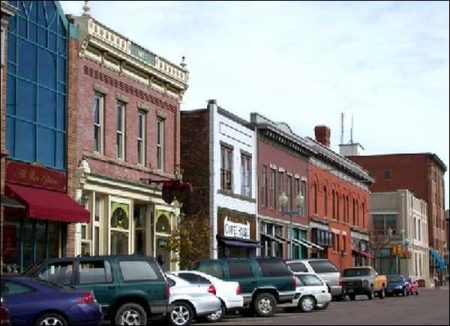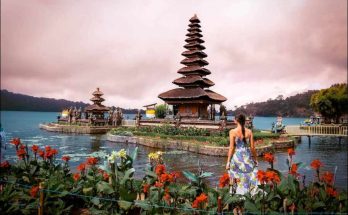Laramie (7,145 alt., 27,204 pop.), seat of the University of Wyoming, is on the east bank of the Laramie River at the southeastern edge of the Laramie Plains. Rows of cottonwoods and poplars bordering the streets are conspicuous against the barren prairie background. Spacious lawns and yards, low-built houses, and wide streets continue within the city the impression of the prairie’s wideness. East of the city the Laramie Mountains reach an elevation of approximately 9,000 feet, and day and night temperatures vary from an average high of 77° in summer to an average low of 48°.
A cement factory, an ice-storing plant, a brick and tile kiln, a gypsum refinery, and a timber creosoting plant operate in suburban Laramie, but perennial winds break up the thin wisps of smoke that rise from great jutting smokestacks. There is no hint of industrial activity in downtown Laramie.
One of Wyoming’s oldest cities, Laramie is no older than some of its residents. Among modern pressed-brick houses and business buildings stand many huge square Southern Colonial structures. Two rambling frame barracks, which housed United States Army officers at Fort Sanders during the Indian wars of the 1860’s and 1870’s, now serve as a college sorority chapter house and as a clubhouse for a young people’s religious organization.
Jack McCall’s arrest in Laramie on August 30, 1876, for shooting Wild Bill Hickok in the back of the head in a Deadwood ( South Dakota) saloon is still remembered by Laramie citizens. One year after McCall’s arrest, Jesse James, with several companions, was lodged in the Laramie jail as a suspect in a near-by stagecoach holdup, but was freed before his identity was known. The University of Wyoming, three years older than the State of Wyoming, celebrated its fiftieth anniversary in the spring of 1937, and two members of its original faculty were present.
In a region not far removed from the mood and severity of the frontier, interests are limited and directed toward immediate problems; but Bill Nye’s contribution to American local-color literature of the 1880’s made Laramie self-conscious and somewhat aware of literary currents, while Wyoming was yet a territory. The establishment of Wyoming’s only college there in 1887 stimulated interest in the humanist tradition, and the college provided inspiration and opportunity for disinterested thought that could not be paralleled in another Wyoming community.
Here, while citizens elsewhere in Wyoming disputed range and water rights or mined valuable minerals, Grace Raymond Hebard and June Etta Downey were writing volumes on Wyoming history and experimental psychology, and Agnes M. Wergeland was composing music or eulogizing the Wyoming scene in delicate Norwegian verse. Here, too, Ted Olson experimented with verse forms and journalism in school newspapers; G. Edward Pendray observed chemical reactions in test tubes to get authentic data for his novels and articles on mechanized science; and Olga Moore (Arnold) wrote her first sketches and short stories for campus publications.
Laramie has several art and humanist societies that developed from campus organizations, and townspeople enjoy college-sponsored dramatic and operatic productions and lecture lyceums. The university’s extension and lecture services are spreading over the State.
The town was named for the legendary French-Canadian trapper, Jacques La Ramie, whose name was also given to a military post, a mountain range, a peak, a river, a county, and a section of the Wyoming Plains. About 1820 La Ramie, a free trapper, worked the tributaries of the North Platte in what became southeastern Wyoming. According to Coutant, he was killed by Indians somewhere along the river that bears his name.
Visits: 111



